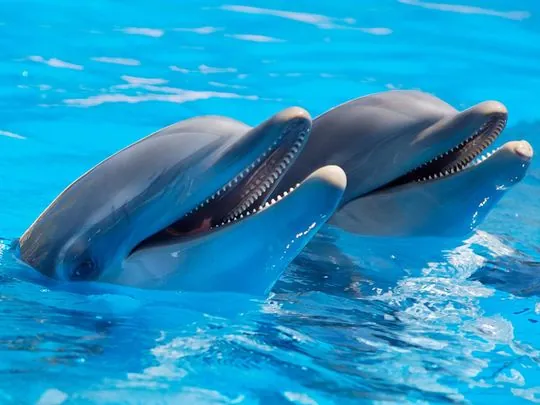
Dolphins Show Their Cheerful Grins When They're Ready for Fun: A Fascinating Study Reveals!
2024-10-02
Author: Ming
Introduction
In an exciting discovery, a team of researchers led by evolutionary biologist Elisabetta Palagi from the University of Pisa has unveiled that dolphins flash their friendly, toothy grins as a signal that they are ready to play! This intriguing finding emerged unexpectedly while the team was observing dolphin behaviors and emphasizes the unique social dynamics of these intelligent creatures.
Dolphin Play Behavior
While investigating dolphin play, researchers observed that the playful aquatic mammals would initiate sessions by opening their mouths wide in front of one another, without any biting involved—a clear indication of their intent to engage in playful activities. This discovery led Palagi and co-author Livio Favaro from the University of Turin to delve deeper into understanding this behavior, especially considering that play in dolphins—ranging from acrobatics to tail slapping—can occasionally escalate into aggression if not properly communicated.
Research Methodology
Though many animals, including bears and primates, exhibit open-mouth gestures as signals of playfulness, it was unclear whether dolphins did the same. To clarify this, the research team meticulously recorded the behaviors of captive bottlenose dolphins during their play sessions at various facilities across Italy and France.
Key Findings
After analyzing hundreds of playful interactions over several months, researchers found that dolphins consistently displayed their cheerful grins when engaging with one another. Interestingly, this playful expression was observed much less frequently when they interacted with humans or were alone. The study highlighted that dolphins were significantly more likely to exhibit this playful grin when they were in each other's visual field, indicating a clear link between social interaction and playfulness. The study also showed that aggressive behaviors, such as jaw slapping, were never associated with this open-mouth gesture.
Comparison to Other Animals
This behavior is reminiscent of how social animals such as humans, great apes, and even dogs communicate joy and intent through reciprocal gestures like smiling and laughter—a phenomenon that occurs almost involuntarily among beings sharing positive feelings. The researchers noted that dolphins were 13 times more likely to mimic an open-mouth expression within a second when they could see the initial gesture. This high probability ruled out the chance of such behavior happening arbitrarily.
Discussion and Implications
The study might stir up debates within the scientific community due to the fact that dolphins primarily communicate through a complex system of whistles and vocalizations. However, Favaro pointed out that there could be valid reasons for dolphins to resort to visual signals during playtime. "In certain situations, using sounds can expose dolphins to predators or unwanted attention," he explained. "Combining whistles with visual cues allows them to interact effectively while minimizing risks during social play when they might be less vigilant."
Conclusion
This groundbreaking research not only showcases the playful nature of dolphins but also sheds light on their intricate communication methods and social structures. As more studies unfold, we may unveil even deeper insights into the lives of these fascinating marine mammals!



 Brasil (PT)
Brasil (PT)
 Canada (EN)
Canada (EN)
 Chile (ES)
Chile (ES)
 España (ES)
España (ES)
 France (FR)
France (FR)
 Hong Kong (EN)
Hong Kong (EN)
 Italia (IT)
Italia (IT)
 日本 (JA)
日本 (JA)
 Magyarország (HU)
Magyarország (HU)
 Norge (NO)
Norge (NO)
 Polska (PL)
Polska (PL)
 Schweiz (DE)
Schweiz (DE)
 Singapore (EN)
Singapore (EN)
 Sverige (SV)
Sverige (SV)
 Suomi (FI)
Suomi (FI)
 Türkiye (TR)
Türkiye (TR)